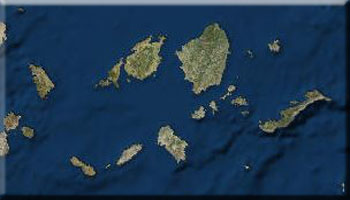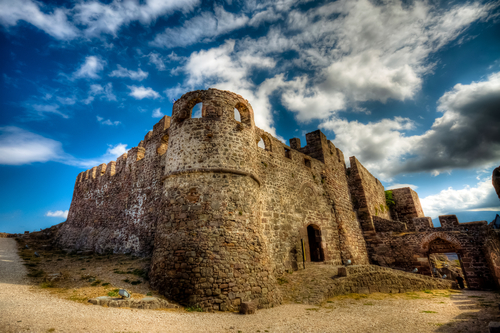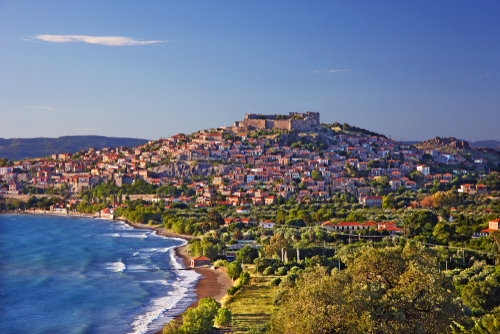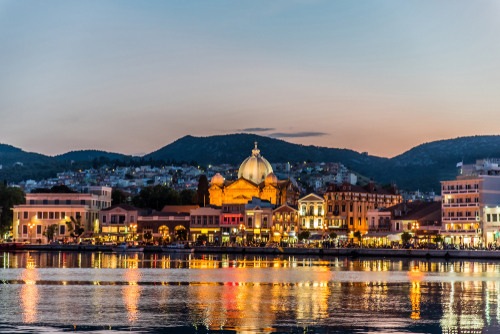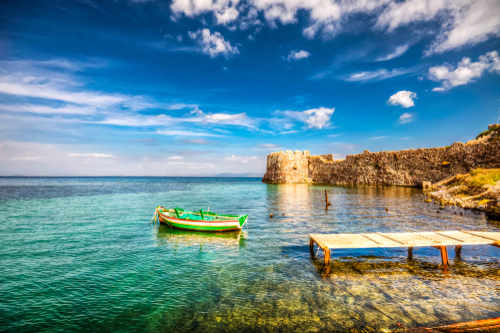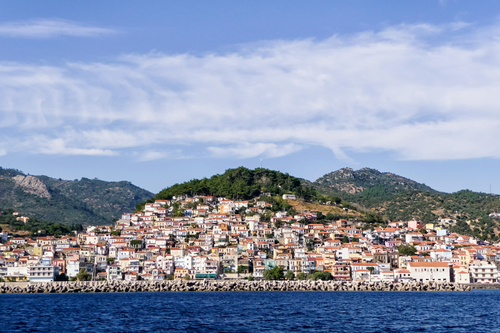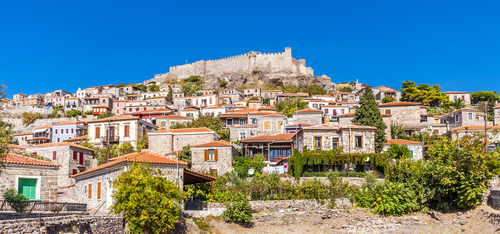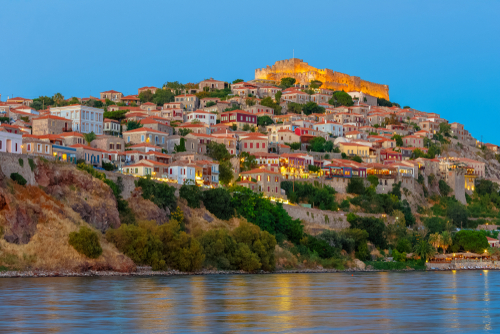LESVOS - GASTRONOMY
A blessed land, full of colors, flavors and scents, Lesvos is an unforgettable journey through flavours produced by unique gastronomical combinations.
Simple and complex recipes, always using wholesome, traditional ingredients, lead to unique exceptional flavours: stuffed kid, giuzlemedes (cheese pies with spearmint), marrow flowers stuffed with cheese or rice, sougania (onion dolma), shrimp saganaki, stuffed calamari. Try kiskeki, a feast dish containing local beef and wheat boiled for hours in large pots, that sweetly melts in the mouth. Don’t forget to taste select seafood such as koutavaki (small edible shark), trigona (a type of guitarfish), striped tuna, red mullet and the renowned Kalloni sardine.
For mushroom fans, Lesvos has numerous surprises, as numerous mushrooms grow in the pine forests in autumn; there are wild mushrooms, oyster mushrooms and Lactarius sanguifluus, an excellent appetizer to accompany your ouzo.
Perhaps the most characteristic scent of the island, second to that of the sea, is the anise used in ouzo. It was natural that Lesvos, with its long hours of sunshine and excellent variety of anise and other aromatic plants, would invent the production of ouzo and include it in its tradition over centuries. Dozens of distilleries are currently active here, with a satisfactory share in the domestic and international market.
In antiquity, the wine of Lesvos was widely sought after. Methymna wine, in particular, was so renowned that it was called the nectar of the Olympian gods. Today, individual producers are involved in winemaking, producing high quality wine; in recent years wineries that produce organic wines have emerged on Lesvos.
If you wish to try a Lesvos-flavored meal, your menu must include Kalloni sardines, which, whether fresh or salted, will win you over with their delicious flavour.
The superior taste of the Kalloni sardine is related to the conditions under which it grows in the bay of the same name. The ideal temperatures and wide variety of feed give the sardine its particular flavour. The papalina, as it is called locally, is small in size, yet fat. Each year, the locals honor the fish at the Sardine Feast held at Kalloni Skala (Pier), where the feast goes on all night.
The tradition of pastes on the island goes far back in time and was for centuries an important source of wealth for Lesvos. Special seafood dishes of the island, among others, are:
-The anchovies.
-The stuffed sardines (with all kinds of aromas and even with pickles) and the wrapped sardines (in vine leaves).
-Stuffed, other small fish are also made, such as red mullets or used as stuffing in dolmadas. But also the mollusks (octopuses, squid, cuttlefish) are stuffed or are stuffed, in many combinations.
-Liokafta, say the fat fish, which are sun-salted for a couple of days before consuming them as a meze.
Lesvos is famous for its dairy produce. Its natural flora and local breeds of goat and sheep ensure top quality goat’s and sheep’s milk, which is processed at traditional cheese dairies, using the age old knowledge and craft preserved and passed down from generation to generation over so many years. Try the island’s feta, kasseri, and graviera cheeses, as well as ladotyri (oily cheese), a hard table cheese with a strong flavour and pleasant aroma. It was named from its old method of preservation, in top quality oil, which gave it a spicier taste. Enjoy it as a table cheese, as well as fried in a saganaki dish.
Pine honey or flower honey, as well as rarer varieties, such as chestnut tree honey and Erica honey, with their characteristic scents, can accompany your freshly baked bread during breakfast, your local sheep’s milk yoghurt or your fruit salad for a nutritious, light supper.
Women’s Associations are active in many regions of the island, producing a wide variety of products, using traditional home reci - pes. Apart from hand-made pasta and chachles (trachana pasta molded in ‘cups’), visitors should also try preserved fruit sweets, such as cherry tomato, as well as olives, watermelon, apple, mar - row and fig, baked sweets, ‘stuffed’ sweets (almond candy), anise wafers, pastelia (sesame honey candy), quince jelly and jams, as well as the renowned placenta (phyllo pastry with walnuts and syrup). Finally, don’t forget to taste the unique liqueurs that come in many flavours, such as sour cherry, spearmint, pomegranate and strawberry.
However, the hidden wealth of the island lies in the incredible variety and quality production of wild and daily herbs and fruits. Something that only truly traditional cuisine knows how to recognize and utilize. To mention their many uses in lesbian dishes and pastries, you need a whole book. The use of legumes is similar, and in fact the local, small-fruited chickpea of Lisvori, which is even made into a dessert.
In closing, we owe a special mention to the festive dish of the big festivals of the island, the kiskets. It is the meat of the sacrificial bull cooked for hours together with ground chickpeas and wheat, until a thick porridge is produced. A painful and ancient dish, around which the community meets and renews its bond and identity. Something much more than a unique gastronomic treasure.
Source: North Aegean Region - https://www.pvaigaiou.gov.gr



